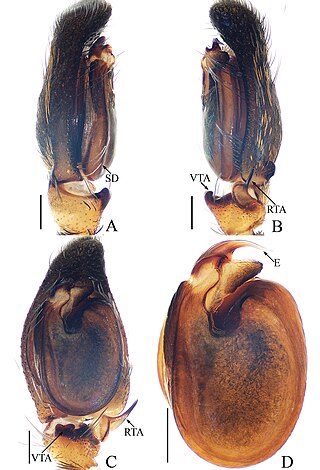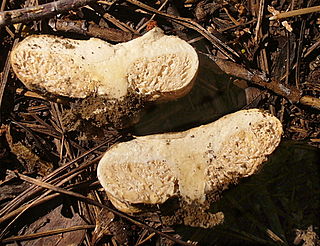Related Research Articles

Eraclio Petri, commonly known as Elio Petri, was an Italian film director, screenwriter, theatre director, and critic associated with the political cinema in the 1960s and '70s. His film Investigation of a Citizen Above Suspicion won the 1971 Oscar for Best Foreign-Language Film, and his film The Working Class Goes to Heaven won the Palme d'Or at the 1972 Cannes Film Festival.

Panaeolus is a genus of small, black-spored, saprotrophic agarics. The word Panaeolus is Greek for "all variegated", alluding to the spotted gills of the mushrooms produced.

The Streblidae are a family of flies in the superfamily Hippoboscoidea, and together with their relatives the Nycteribiidae, are known as bat flies. They are winged or wingless ectoparasites of bats, and often have long legs. They appear to be host-specific, with different species of bat flies occurring only on particular species of bat hosts, sometimes with multiple species of flies sharing a host bat.

Gelotia is a genus of jumping spiders that was first described by Tamerlan Thorell in 1890.

Pluteus is a large genus of fungi with over 300 species. They are wood rotting saprobes with pink spore prints and gills that are free from the stem.

Pier Antonio Micheli was a noted Italian botanist, professor of botany in Pisa, curator of the Orto Botanico di Firenze, author of Nova plantarum genera iuxta Tournefortii methodum disposita. He discovered the spores of mushrooms, was a leading authority on cryptogams, and coined several important genera of microfungi including Aspergillus and Botrytis.

Maxomys is a genus of rodents, widespread in Southeast Asia. They are mid-sized rodents, similar to rats, that live on the ground of tropical rainforests. There they build nests, padded with fallen leaves from trees. They feed on roots, fallen fruit, and other plants, as well as insects. All species are shy and avoid food from humans.

Panaeolus cyanescens, commonly known as the blue staining panaeolus, is a mushroom in the Bolbitiaceae family. Panaeolus cyanescens is a common psychoactive mushroom and is similar to Panaeolus tropicalis.

Members of the Monoblepharidomycetes have a filamentous thallus that is either extensive or simple and unbranched. They frequently have a holdfast at the base. In contrast to other taxa in their phylum, some reproduce using autospores, although many do so through zoospores. Oogamous sexual reproduction may also occur.

Giacomo Bresadola 14 February 1847 – Trento 9 June 1929) was an eminent Italian mycologist. Fungi he named include the deadly Lepiota helveola and Inocybe patouillardii, though the latter is now known as Inosperma erubescens as this latter description predated Bresadola's by a year. He was a founding member of the Société mycologique de France.

Giovanni Arcangeli was an Italian botanist from Florence.

Gloeoporus is a genus of crust fungi in the family Irpicaceae. The genus has a widespread distribution.
Grosmannia is a genus of fungi in the family Ophiostomataceae. It was circumscribed by G. Goidànich in 1936.

Arcangeliella is a genus of gasteroid fungi in the family Russulaceae. Taxonomic and phylogenetic research has shown that it is very likely a synonym of Lactarius. The type species Arcangeliella borziana was moved to Lactarius in 2003. However, the genus name is still in use for several species for which new combinations have not yet been proposed.
Cheiromycina is a genus of fungi belonging to the family Malmideaceae.
Celotheliaceae is a family of fungi in the monotypic order Phaeomoniellales. It contains 27 species of crustose lichens with thalli that are more or less immersed in tree bark.
References
- ↑ Petri L. (1900). "Descrizione di alcuni gasteromicei di Borneo". Malpighia (in Italian). 14: 111–39.
- ↑ Kirk PM, Cannon PF, Minter DW, Stalpers JA (2008). Dictionary of the Fungi (10th ed.). Wallingford, UK: CABI. p. 148. ISBN 978-0-85199-826-8.